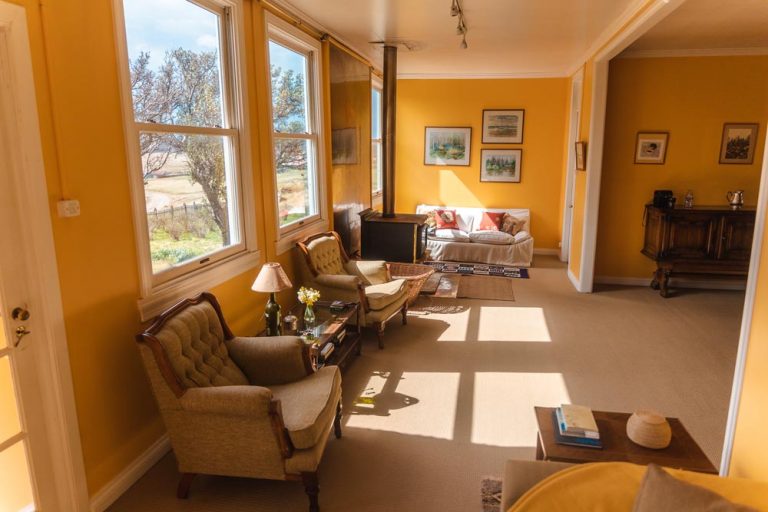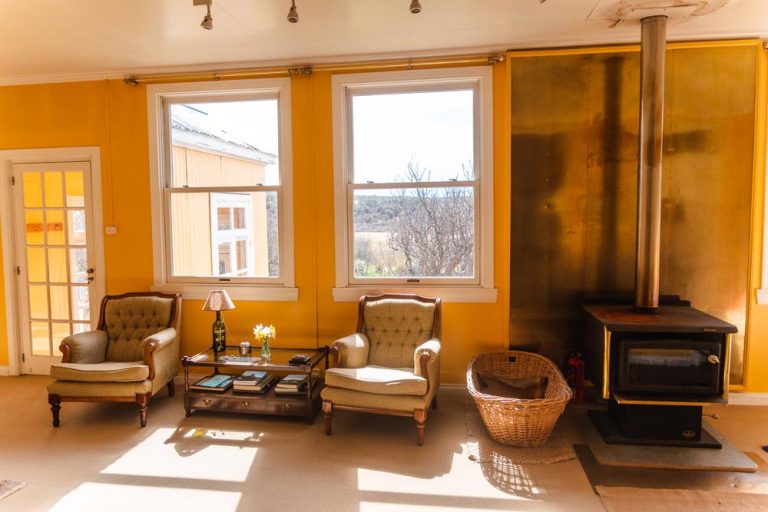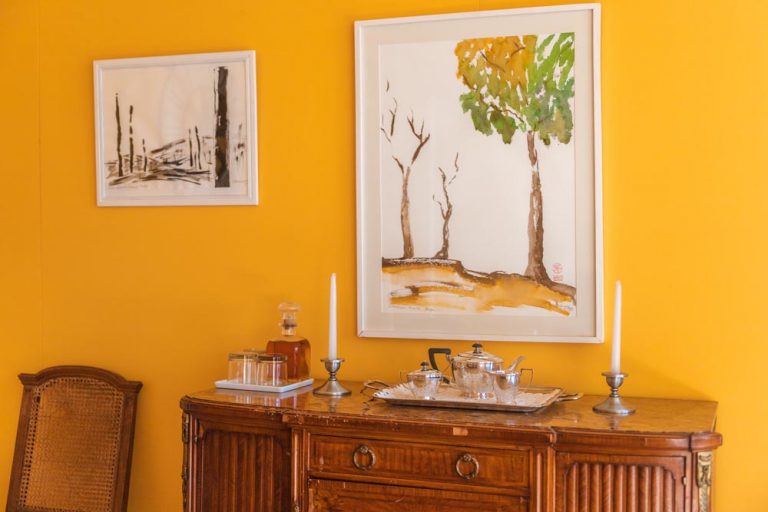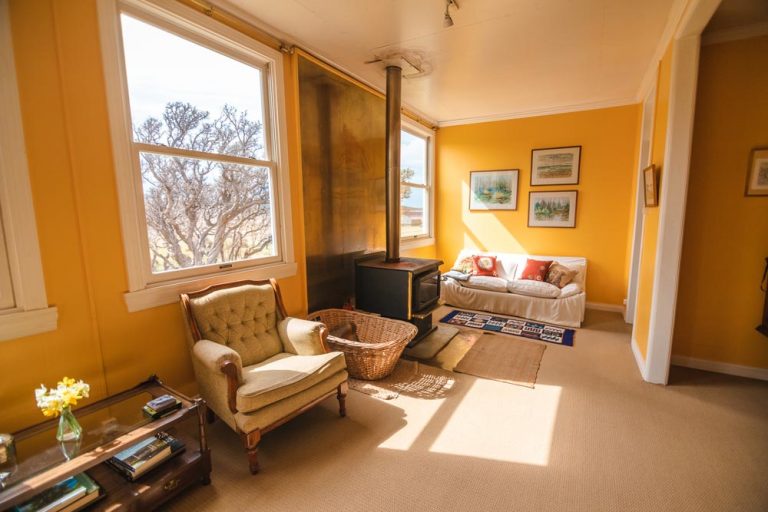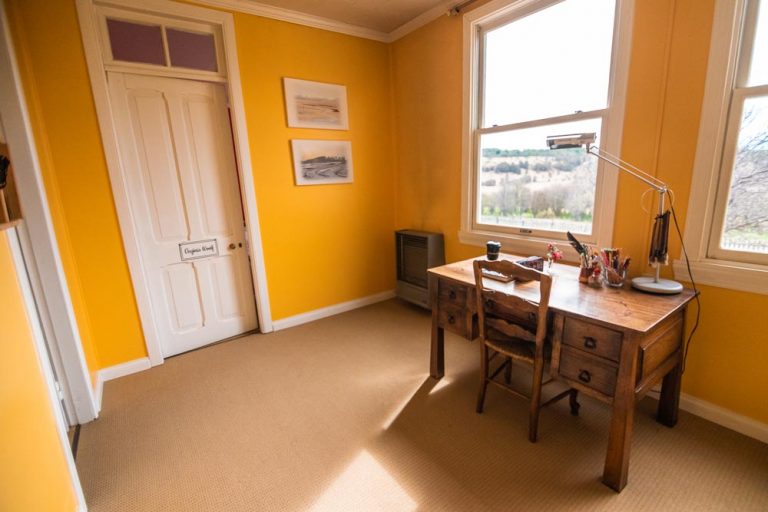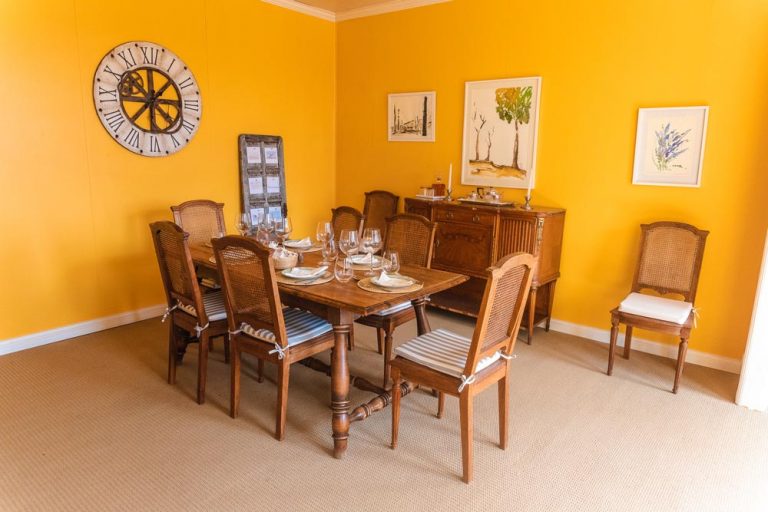The farm has numerous buildings, and it is important to remember that at the time it was built and planned, it had a surface area of 109.000 hectares and many employees.
That is why it has a shearing shed; sheep baths and dryers; corrals and pens for sheep; slaughtering facilities; and also corrals, pens and scales for cattle.
At the entrance, the houses and other constructions are located, alongside a street. In the first place is the Main House/Casa Principal, with its park and orchard. Also there is an old underground cellar for potatoes and vegetables. El Tambito, one of our favourite places on the ranch, where we cook and taste delicious roast lamb, is also located in this park.
There is a small garage and the kennels for the dogs are also in the surrounding areas. There is also a building where our electrical power motor is, as on all farms in the area we generate our own energy.
Then the second home is the Administration House/Casa Administración, which has a large flowery park, and an orchard area.
The third main building in the line of construction is the Office and Supplies building/ Oficina y Despacho, which is used to store electricity, plumbing, gas, and veterinary spare parts. We are also putting together a museum section since we believe it is important to value all the history and work of so many years in the area.
Next is the Foreman’s House/Casa Capataz, which was formerly used as a home for the foreman who organised the daily work with the shepherds and labourers on the farm.
Then there is a large building that is the Kitchen and Dining Room/Cocina y Comedor. It is important to highlight the importance that this building had several years ago, with a lot of staff, since food was prepared there for all the workers. In addition, there is an old Bakery/Panadería nearby, which we want to restore, since every day the bread that was consumed on the farm was made there. There are two dining rooms, one General, and another, smaller, which was intended for the higher-ranking staff of the estancia. The cook’s house is also attached.
Next in our row of houses, there is the former Shepherd’s House/ Casa de Ovejeros, which has been recycled, and in which we host our visitors. It has three bedrooms and three bathrooms; with a living room, a kitchenette and a kitchen.
Next is the Club de Trabajadores, which is a large house, with a main living room, a kitchen area and 4 bedrooms. This building was used in the estancias, as housing for workers in general, called “peón de a pie”, or “municipal” in the rural work jargon. There they had their room, and a room where they could eat something, drink some mate, listen to the radio, work on their saddles and ropes or play cards in the late afternoon or on long winter nights, when the days are short.
Behind this Workers’ Club is the Laundry/Lavandería with showers and sinks for washing clothes and personal hygiene. Nearby are the old outdoor toilets, which were used by all the staff.
The next house is the Casa de Empleados, which has a living room-kitchen; full bathroom and three bedrooms. The employees that had special trades lived in this house.
The last building on this street is the Casa de Esquiladores, which housed, during shearing times: generally in the month of January, the gangs of shearers that came to the farm to carry out that specific task. The building has a large living room with an old wood-burning stove, and 7 rooms.
Behind this row of buildings is the Carpintería, where the doors and windows of all the buildings were made, and where repairs are made.
There is also the Ironworks room/Herrería with a forge and all the necessary implements to work irons and metals, including vises and other tools.
La Caballeriza/Stables occupies a large building, where the tools, ropes and saddles for the horses are kept. In addition, due to the inclement weather on our island, it is common to saddle horses indoors, to protect them from wind and snowfall.


